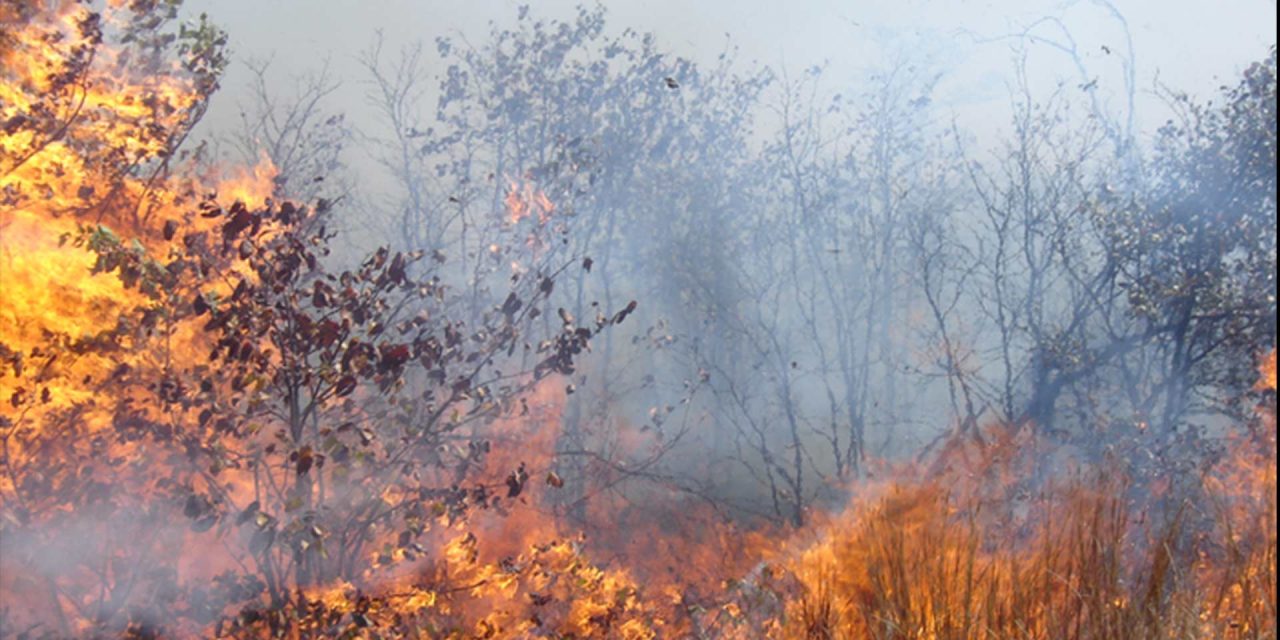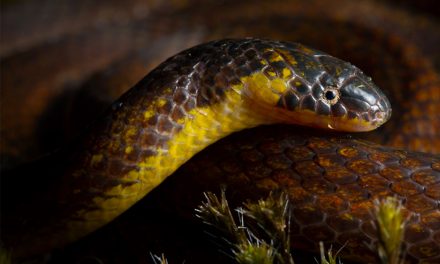Despite an initial short-term effect, high-intensity fires in African savannas do not result in a meaningful reversal in bush encroachment
A decade-long experiment on the use of high-intensity fire to control bush encroachment in South Africa’s Kruger National Park (KNP) has revealed that, despite an initial short-term effect, these fires did not result in a meaningful reversal in bush encroachment in the long term.
Professor Brian van Wilgen, emeritus professor in invasion biology at Stellenbosch University (SU) and one of the co-authors, says most papers that advocate the use of high-intensity fires are based on observation over a short time.
He added: “I think this is the first study to assess this management practice’s effectiveness over a decade.”
Bush or woody encroachment, which is a process where the density of smaller trees and shrubs is increasing, is taking place across the world.
This is worrying because increased woody cover results in less grass available for animals that eat grass or use it as habitat. Although the causes are complex and not that clear, a decrease in the use of fire, coupled with an increase in CO2, may be to blame in savannas.
See also: Data highlights ‘staggering’ extent of global tree loss from forest fires

bush encroachment
In 2010 and again in 2013, adjacent sites in the southern parts of the KNP, covering thousands of hectares, were burned using low, medium, and high-intensity fires.
The objective was to examine whether high-intensity fires can be used to reverse bush encroachment. At the time of the first burn application, KNP officials had to deal with substantial negative publicity after some animals were mortally injured.
A study reporting the effects on woody plant cover one year after the completion of the second set of experimental fires showed that woody plant cover did indeed decline significantly over this short period.
The initial study, however, cautioned that the long-term efficacy of these high-intensity fires still needed to be confirmed.
In 2020, using a combination of ground surveys and remote sensing data, scientists from South African National Parks (SANParks), Harvard University and the Centre for Invasion Biology at Stellenbosch University compared the 2010 data with their 2020 observations.
Despite the initial encouraging results, they found that the reduced woody plant cover was not maintained after ten years.
Even though there were large differences between the fire treatment sites one year after the experimental fires, these differences had disappeared after ten years, strongly suggesting that differences in fire intensity did not have a long-term effect on bush encroachment.
Even more concerning was the trend of tall tree loss in the KNP. Over the past decade, trees taller than ten metres declined by about 65% across all the experimental sites, regardless of the fire treatment.
According to SANParks scientist and first author on the article, Tercia Strydom, this was because of a combination of elephant and fire damage: “Tall trees are normally capable of withstanding frequent savanna fires due to their thick bark. But when elephants debark a tree (because they eat it), that thick protective bark is removed, exposing the inner wood.
“When this inner wood dries out, it burns and smolders within the tree until the tree eventually succumbs.”
lessons learned
According to van Wilgen, the paper shows the value of long-term monitoring to establish the real outcome, and not to jump to conclusions: “It also shows how complex things can be, and that there is no easy fix to bush encroachment.”
Dr Izak Smit, senior scientist at SANParks and another co-author, says the park continues to follow a strategic adaptive management approach in which local context is paramount.
He stated: “Best available knowledge needs to be gathered from the literature, and based on that a careful evaluation must inform what management action you consider appropriate to implement in your area of interest.
“The outcomes of this action should be carefully monitored to see whether or not you actually obtain the anticipated outcomes.”
Smit added: “This way, ecology reveals its complexity and nuance in different contexts and allows us to fine-tune the way we manage protected areas – learning as we continue to manage in the face of uncertainty.”
The authors warn that, on a global scale, inter-continental and even intra-continental generalisations regarding the most appropriate management actions for bush encroachment remain elusive.
According to Strydom, this case study may not even be representative of other parts of southern Africa based on differences in elephant density, soil type and rainfall, amongst a plethora of other factors.
The results are published in the Journal of Applied Ecology.
Image 1: A typical fire in South Africa’s Kruger National Park showing how both the grasses and shrubs burn. © Brian van Wilgen.
Image 2: Vegetation in the Kruger National Park showing separate layers – scattered tall trees that are declining in number due to the actions of fire and elephants, and an understory of low shrubs that is becoming more dense”. © Brian van Wilgen.













